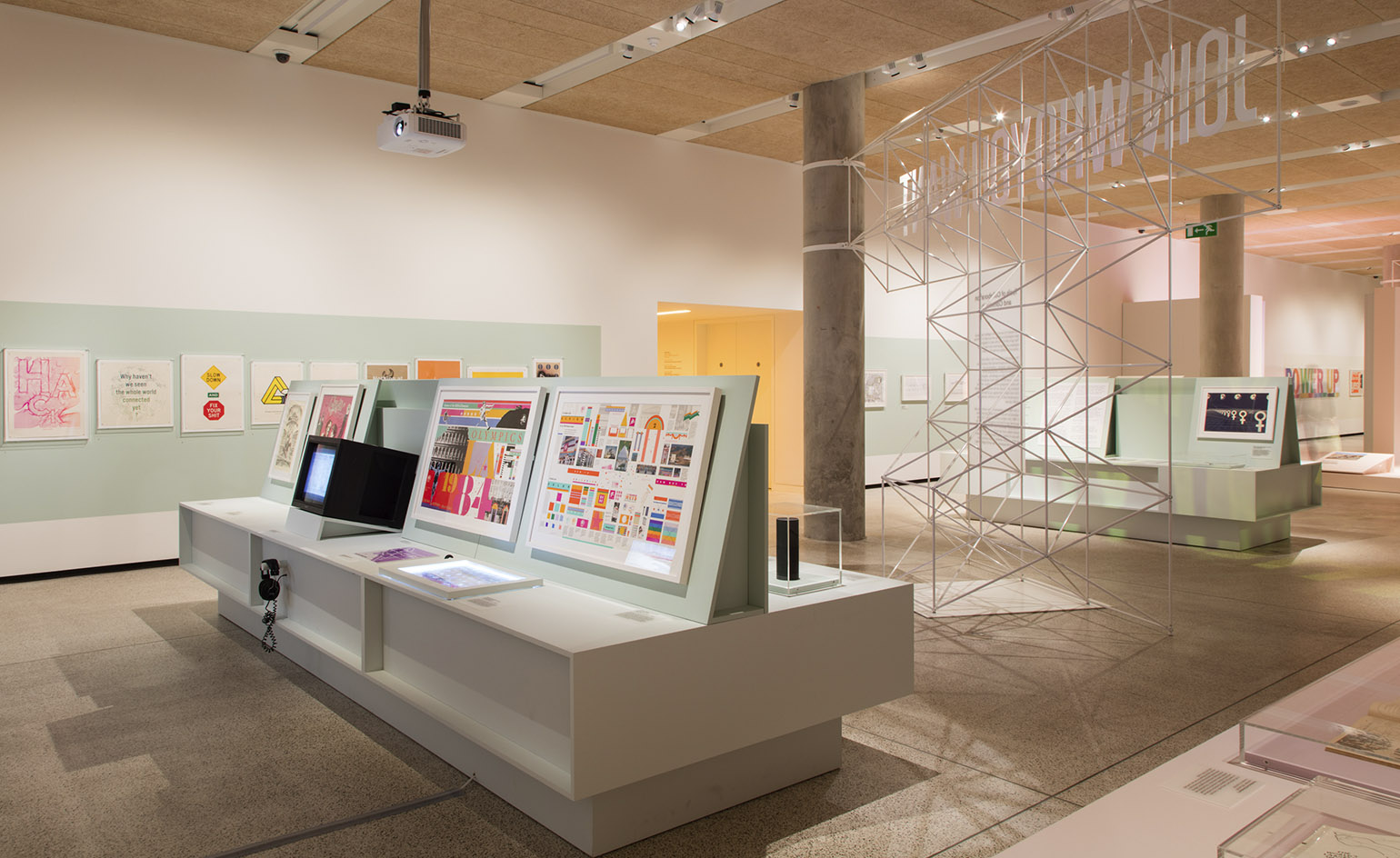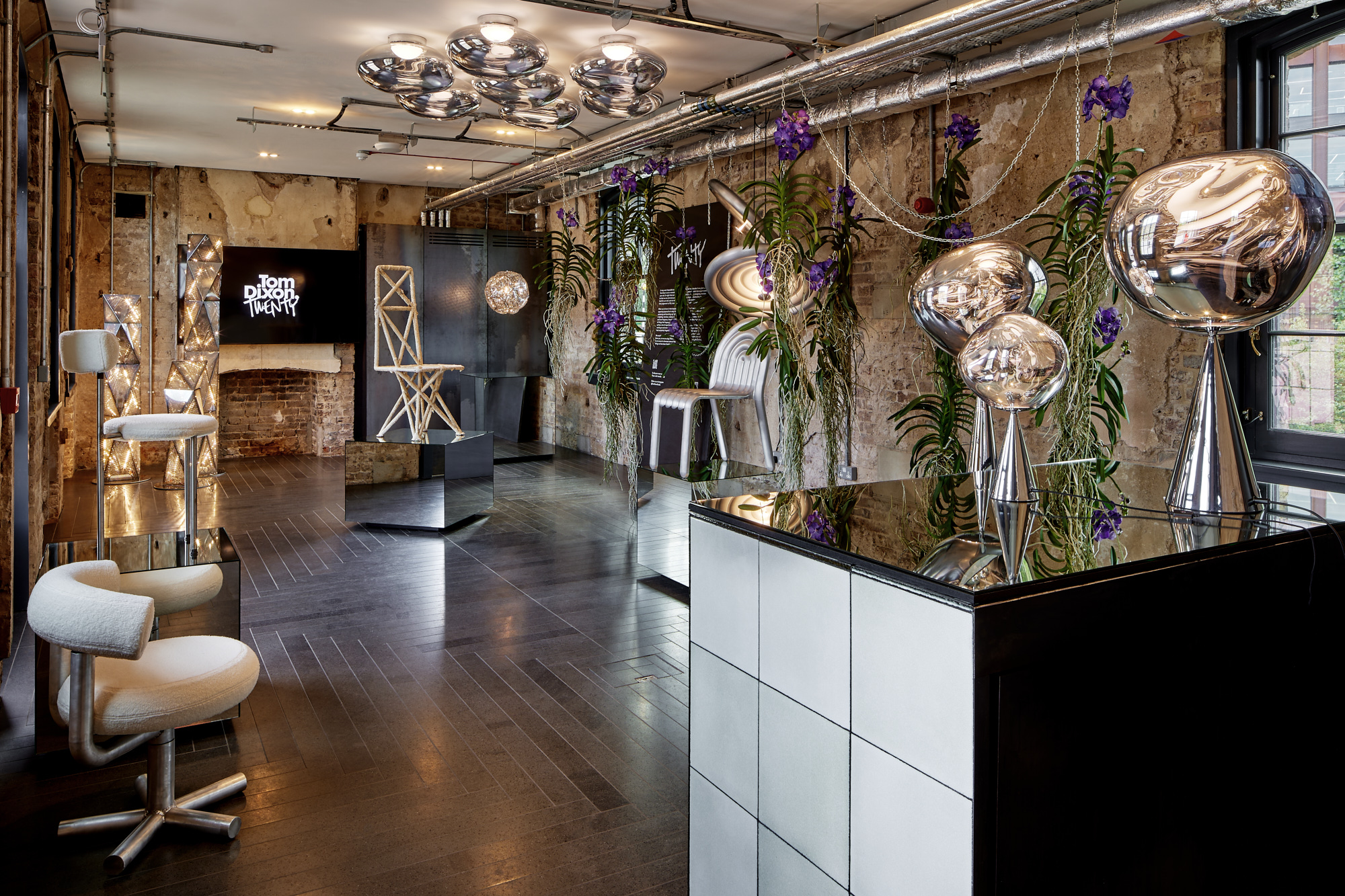From functional to fantastical, a new exhibition traces California’s techno-utopia

What do Apple, Google, and Facebook have in common with the Californian hippie movement of the 1960s? A new exhibition at London’s Design Museum explains the relationship between Silicon Valley’s eco-system and California’s freewheeling past.
‘California: Designing Freedom’ is organised around five themes, considering how individuals can control how they see, make, speak, travel, and share, using technology. Presented partly in a series of Geodesic domes — the lattice-shelled architectural structures favoured by Californian communes in the 1960s and 1970s — the curators Justin McGuirk and Brendan McGetrick demonstrate how the 1960s counterculture movements in the Golden State have inspired the ethos of its major corporations up to today, with the belief that technology can equip the individual with the tools for a better, easier, and self-sufficient life.

Rainbow flag, by Gilbert Baker, 1978
Through objects, archival publications, documents, and even LSD blotting paper, the benevolence of that ideology is unwavering. Stewart Brand’s 1968 Whole Earth Catalogue, a precursor to Wikipedia, for example, was an early attempt to democratise access to information; a home kit for genetic engineering is another invention that shares the intent of giving the public the tools to create change for themselves—albeit more problematic when put in to practical use.
Although this exhibition is a buoyant celebration of California as the heartland of pioneering design and technology, it’s not all gimmicks, gizmos and gadgets. In 1995, two academics at the nearby University of Westminster published an essay that also probed at the politics of the Silicon Valley, now visualised in this exhibition.
Richard Barbrook and Andy Cameroon’s The Californian Ideology pointed out the contradictions in the idealistic impulse in ‘Dotcom neoliberalism’ in Silicon Valley. The media theorists argued that the paradoxical mix of New Left and New Right beliefs in California has in fact lead to what Adam Curtis later referred to as the feeling ‘that we are helpless components in a global system’. The more pernicious consequences of technological advances in our advance capitalist system—from social immobility, to hacking and terrorism—can’t be ignored.
With some of the very recent new technologies now at our disposition, on display here: Snapchat Spectacles, Amazon Echo, FitBit and, Waymo (Google’s self-driving car, seen for the first time in the UK) the question is left hanging over the techno-utopia. From functional to fantastical, you’re left wondering whether technology has really liberated us, or made us slaves to the machine.

The curators demonstrate how the 1960s counterculture movement in the Golden State has inspired the ethos of major corporations up to today. In foreground, a neon sign from the first Google office in Mountain View, 1998

A display shows the evolution of the skateboard deck, from the 1950s through to the noughties

The show is partly made up of a series of Geodesic domes, the lattice-shelled architectural structures favoured by Californian communes in the 1960s and 1970s

Media collective Environmental Communications’ film series on Los Angeles explores the city’s architectural culture

The Chamber Brothers, The Matrix, San Francisco, by Victor Moscoso, 1967

The Macintosh [128K], unveiled by the Apple Computer design team in 1984, was the first mass-market Apple personal computer featuring integral graphical interface and mouse

Through objects, archival publications and documents, the idea that technology can equip the individual with the tools for a self-sufficient life is demonstrated

Women in Design conference poster and necklace (foreground), by Shelia Leverant de Betteville,1974; and Power up (background), by Corita Kent, 1965

Emojis were originally invented in the late 1990s by Shigetaka Kurita for Japanese mobile phones, and then made a global language for the Apple iPhone in 2009
INFORMATION
‘California: Designing Freedom’ is on view until 15 October. For more information, visit the Design Museum London website
ADDRESS
Design Museum
224-238 Kensington High Street
London W8 6SG
Wallpaper* Newsletter
Receive our daily digest of inspiration, escapism and design stories from around the world direct to your inbox.
Charlotte Jansen is a journalist and the author of two books on photography, Girl on Girl (2017) and Photography Now (2021). She is commissioning editor at Elephant magazine and has written on contemporary art and culture for The Guardian, the Financial Times, ELLE, the British Journal of Photography, Frieze and Artsy. Jansen is also presenter of Dior Talks podcast series, The Female Gaze.
-
 Put these emerging artists on your radar
Put these emerging artists on your radarThis crop of six new talents is poised to shake up the art world. Get to know them now
By Tianna Williams
-
 Dining at Pyrá feels like a Mediterranean kiss on both cheeks
Dining at Pyrá feels like a Mediterranean kiss on both cheeksDesigned by House of Dré, this Lonsdale Road addition dishes up an enticing fusion of Greek and Spanish cooking
By Sofia de la Cruz
-
 Creased, crumpled: S/S 2025 menswear is about clothes that have ‘lived a life’
Creased, crumpled: S/S 2025 menswear is about clothes that have ‘lived a life’The S/S 2025 menswear collections see designers embrace the creased and the crumpled, conjuring a mood of laidback languor that ran through the season – captured here by photographer Steve Harnacke and stylist Nicola Neri for Wallpaper*
By Jack Moss
-
 ‘R for Repair’ at London Design Festival displays broken objects, re-formed
‘R for Repair’ at London Design Festival displays broken objects, re-formedIn the second half of a two-part exhibition and as part of London Design Festival 2022, ‘R for Repair’ at the V&A displays broken objects, re-formed
By Martha Elliott
-
 ‘Finding quality through the act of making’: Pearson Lloyd celebrates 25 years of design
‘Finding quality through the act of making’: Pearson Lloyd celebrates 25 years of designPearson Lloyd’s show ‘Change Making’ reflects on past designs from its archives, showcasing the influences on and evolution of the studio, from furniture design to the NHS
By Martha Elliott
-
 Tom Dixon marks his studio's 20 years with a show of design experiments
Tom Dixon marks his studio's 20 years with a show of design experimentsMushroom, cork, steel coral and more: Tom Dixon showcases an overview of his design experiments as he celebrates his practice's 20 years
By Rosa Bertoli
-
 Porro unveils new London showroom at Coal Office
Porro unveils new London showroom at Coal OfficeLondon Design Festival 2022: industrial architecture meets pure geometries in the new Porro showroom, taking over a space within Tom Dixon’s Coal Office to showcase the brand’s systems and furniture
By Rosa Bertoli
-
 Vitra unveils new London home in the Tramshed, Shoreditch
Vitra unveils new London home in the Tramshed, ShoreditchLondon Design Festival 2022: after a year-long renovation, Vitra opens the door to its new showroom in the heart of Shoreditch
By Rosa Bertoli
-
 Mudlarking beside the River Thames inspires The New Craftsmen’s makers
Mudlarking beside the River Thames inspires The New Craftsmen’s makersLondon Design Festival 2022: The New Craftsmen’s new collection, ‘Claylarks’, features work from a group of creatives inspired by a River Thames mudlarking expedition
By Mary Cleary
-
 One tree, ten designers: SCP presents The One Tree Project at London Design Festival
One tree, ten designers: SCP presents The One Tree Project at London Design FestivalLondon Design Festival 2022: SCP enlisted ten British designers to create furniture and objects from a felled ash tree from founder Sheridan Coakley's Hampshire garden
By Francesca Perry
-
 London Design Medals 2022
London Design Medals 2022London Design Medals 2022 are awarded to costume designer Sandy Powell, architect Indy Johar, researcher Joycelyn Longdon and photographer Sir Don McCullin
By Rosa Bertoli